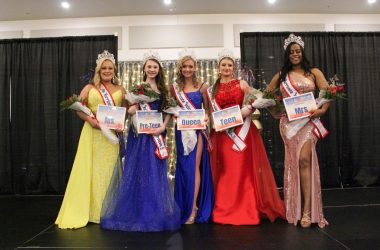On April 8th, the moon’s shadow will produce a fifty-mile wide circle of total darkness that will enter the United States from Mexico by crossing the Rio Grande in Texas and eventually exiting at the Canadian border at Houlton, Maine. The period of total darkness will be longest for locations in the circle’s center (about 4 minutes). The shadow’s path of total darkness will not cross any part of West Virginia. It will miss the northern panhandle by about 50 miles.
West Virginia and Putnam County will not, however, escape the much wider partial shadow of the moon. The moon will begin to blot out sunlight in Hurricane at 1:55 p.m. The obstruction of the sun will build and reach a maximum of 93.6% coverage at 3:13 p.m. Observers will not see the full disk of the sun until 4:27 p.m.
Caution will be necessary because, weather permitting, there will be observers. A brief glance at the sun can result in temporary blindness. Longer looks can result in permanent vision loss. Proper eye protection, like eclipse glasses or a special solar filter, is needed when looking directly at the sun. Sunglasses cannot provide satisfactory protection. Indirect observation using a self-manufactured pinhole projector is a totally safe option.
A 93.6% blockage of sunlight does not produce the degree of darkness that one might expect. On July 20, 1963, I observed a 96% obstructed sun (175 miles from the path of total eclipse) on a bright and shiny day. It barely got dark enough to quiet our early-to-bed chickens.
If there is any cloud cover on the afternoon of April 8 (and one is not expecting darkened skies at 3 p.m.), the partial eclipse may go unnoticed in West Virginia. Historically, there is a 60% chance of cloud cover on that date. The Accuweather long-range forecast (on March 26) for April 8 called for sunshine and patchy clouds with a high of 67°. Accuweather is always right when it is right and wrong when it is wrong.
I did not have access to eclipse glasses in 1963 but I did observe the partial eclipse directly by shielding my eyes with multiple layers of fully exposed photographic film (I’m not certain of when I last saw photographic film).
If April 8 is blessed with cloudless skies, I will invest in two paper plates and a needle (all the elements necessary to construct a pinhole projector). Manufacture is simple — poke a small round hole or several holes for multiple images in one plate. User instructions are similarly simple — with back to sun, hold the perpetrated plate such that its shadow is cast upon the second paper plate. The light passing through the pinhole will produce an inverted image the sun upon the second plate. The size of the image is dependent upon the spacing between the plates.
At precisely 3:13 and clear skies, I will behold an image like that of a crescent moon.



